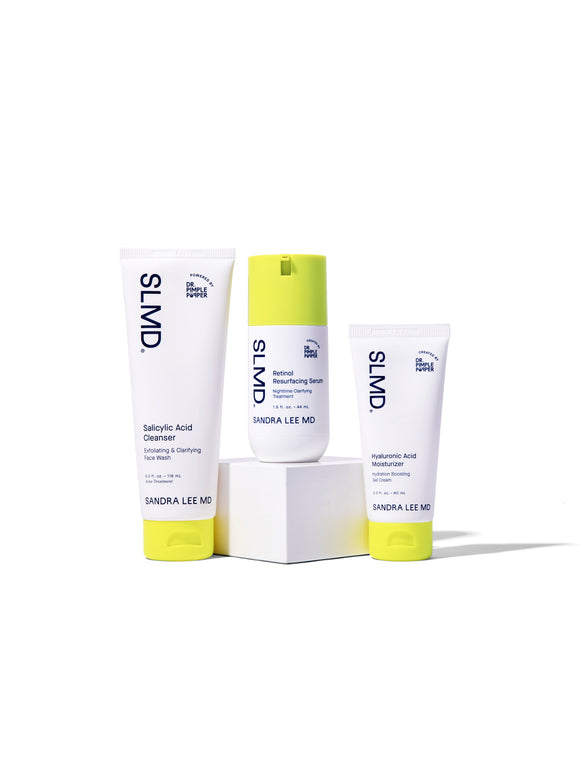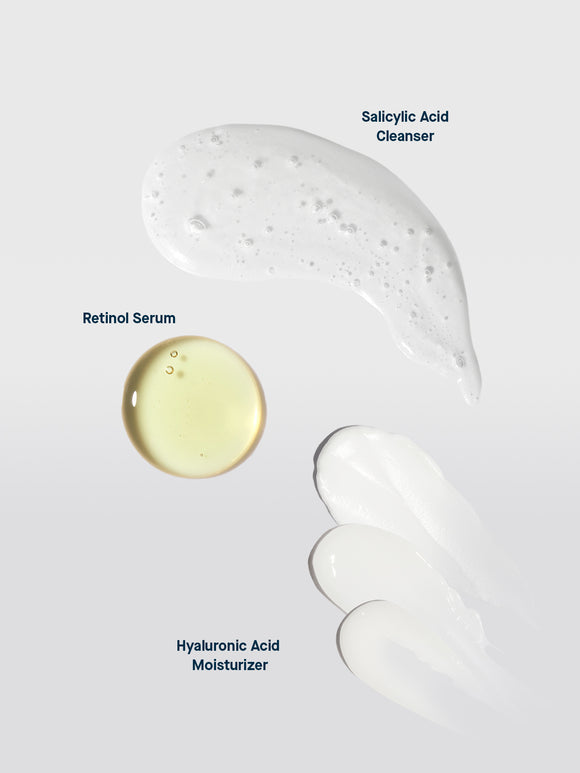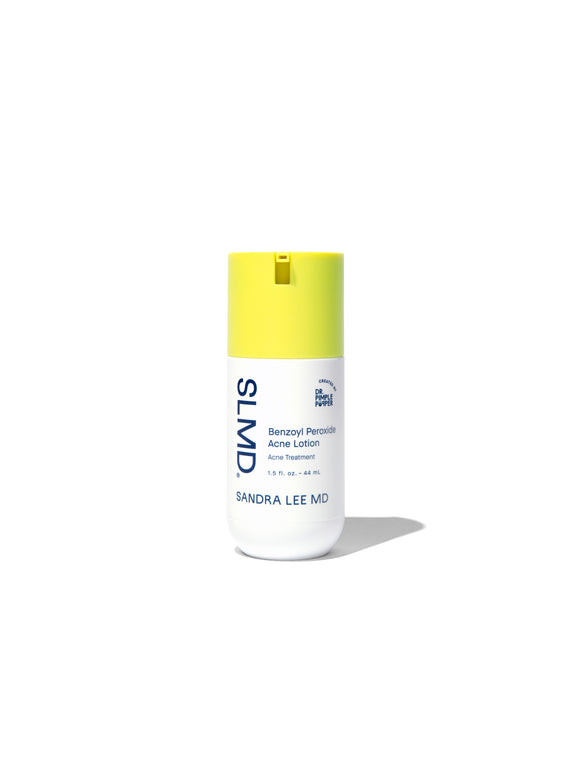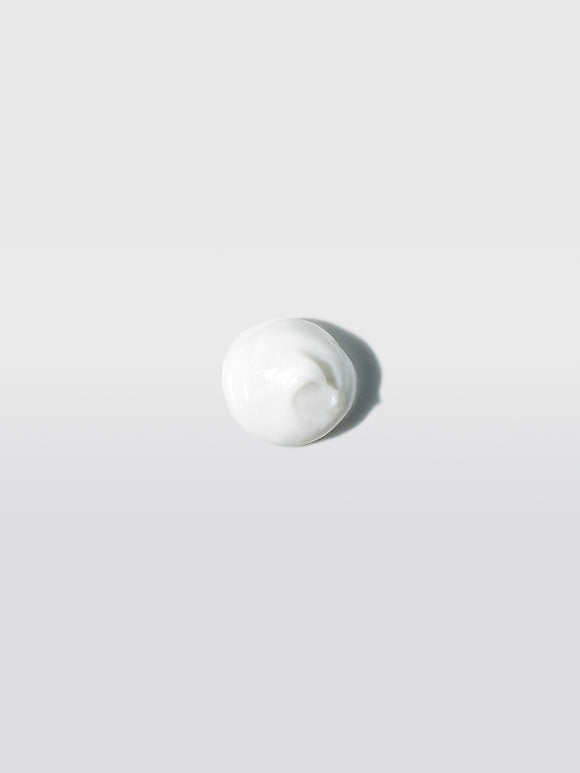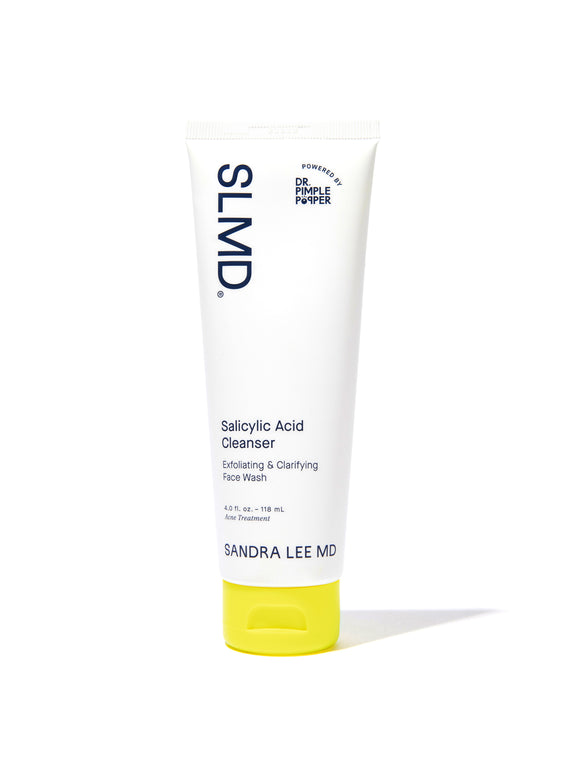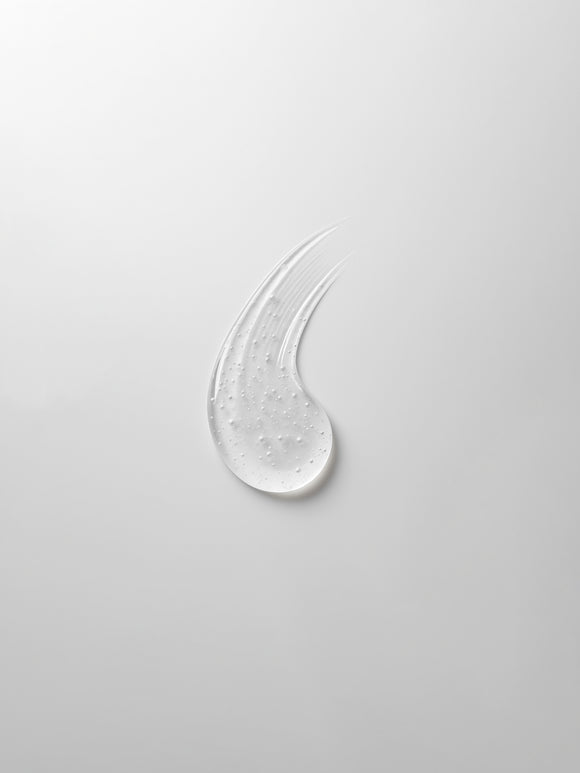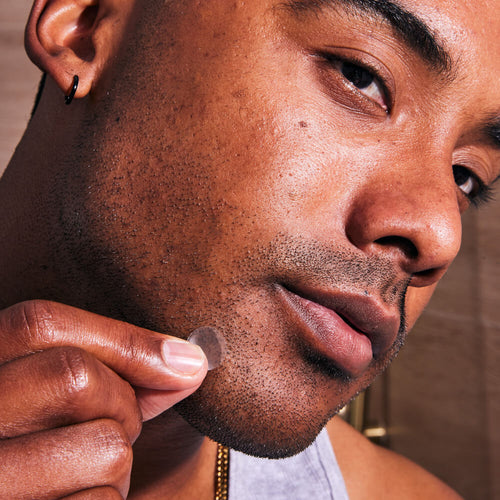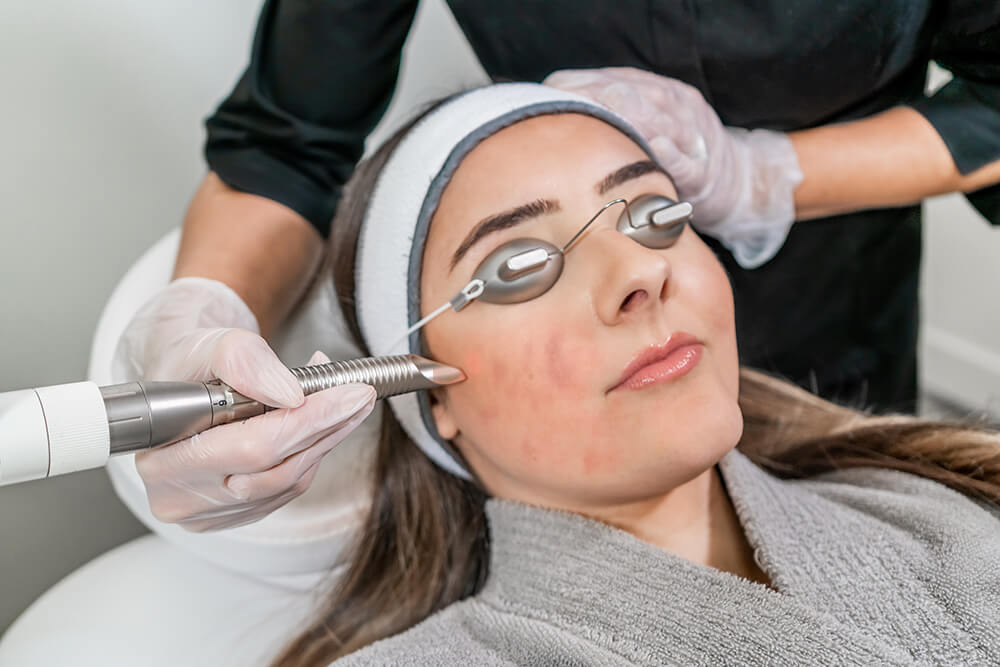
Can Acne Really Be Treated with a Laser?
One of the most promising new acne treatments is the use of laser technology, which research shows can measurably reduce redness and acne lesions in some patients. Here, we’re highlighting everything you need to know about treating acne with lasers — from the science behind it, to what types of pimples respond best.
Published:
5 minute read
Since acne is the most common skin condition on the planet, it’s no surprise researchers are continually searching for novel approaches to treatment. One of the most promising is the use of laser technology.
Here, we’re highlighting everything you need to know about treating acne with lasers — from the science behind it, to what types of pimples respond best.
Article Quick Links
How do dermatologists use lasers?
Let’s start with what laser actually means: it’s an acronym for Light Amplification by Stimulated Emission of Radiation. These devices concentrate light energy of varying frequencies capable of affecting the skin in different ways. What makes laser therapy unique is that laser beams can target specific skin characteristics or cell types, without causing damage or altering nearby tissue.
Lasers have a wide range of dermatological applications, including:
- Hair removal/hair growth stimulation
- Removal of growths like warts and moles
- Scar improvement
- Tattoo removal
- Acne treatment
Can lasers treat acne?
In recent years, numerous studies have suggested that lasers can be beneficial for treating certain forms of acne. In particular, a handful of laser devices have shown promising results for people with mild to moderate inflammatory acne, like papules, pustules, and cysts. They’re less effective, however, for managing non-inflammatory blackheads and whiteheads.
Most experts agree that current laser technology is best used in conjunction with other traditional acne therapies, like topical antibiotics, or salicylic acid. Some studies have shown that combination therapy yields better results than monotherapy (aka treatment with lasers alone).
Lasers also seem particularly promising for patients who don’t respond well, or cannot receive, other types of treatments, like antibiotics, hormonal or retinoid based topical or oral therapy.
Lasers are differentiated by several key characteristics, including:
- Wavelength. Different wavelengths produce different types of light, including colors. For acne, it’s typically yellow, green, red and infrared.
- Depth. Ablative lasers can penetrate into the dermis, while non-ablative lasers affect only the epidermis.
- Pattern. Non-fractionated lasers focus the energy beam equally over a given area, whereas fractionated lasers work in a pixelated pattern that’s gentler on skin overall.
How do lasers treat acne?
Different types of laser energy have been shown to target different components of what causes acne. Remember that our current understanding of the factors contributing to acne include:
- Skin cell proliferation/shedding
- Sebum composition and amount
- Skin’s microbiome (C. acnes balance)
- Inflammatory response
Lasers work by interrupting or altering some of these processes. Though more research is needed, we can draw some conclusions about how lasers affect acne:
- Killing C. acnes bacteria. Certain wavelengths react with chemicals called porphyrins that acne bacteria produce. This reaction ends up killing the bacteria.
- Damaging sebocytes. It’s believed that some laser energy is capable of damaging the cells that produce sebum. Less oil in the skin has been correlated with a reduction in acne.
- Calming inflammation. Reducing the number of tiny blood vessels in the surface of the skin (a process called selective photothermolysis) eliminates some of the redness associated with inflammatory acne.
- Promoting healing. Laser energy can stimulate collagen production, which helps skin recover from acne lesions, and can also reduce acne scarring.
What types of lasers treat acne?
Researchers have been experimenting with a variety of different lasers, and today dermatologists rely on several that are available based on the type and severity of the acne.
- Pulsed dye lasers (PDL): These lasers emit yellow light that has been traditionally used to target blood vessels (redness). They’re believed to kill C. acnes, and reduce oil production and inflammation.
- Potassium titanyl phosphate lasers (KTP): These lasers use green light and are believed to work in a similar way to PDL devices, by either killing bacteria, reducing inflammation, damaging sebaceous glands, or some combination of those.
- Diode laser (1450 nm): This particular laser is believed to permanently reduce sebum production by selectively heating and damaging sebocytes, the cells that make up sebaceous glands and produce oil. It’s also thought to promote healing, particularly collagen remodeling.
- ND: YAG lasers: These energy micropulses destroy C. acnes bacteria and also reduce sebaceous gland output. Some reports indicate comparable results, with fewer side effects than pulsed dye laser technology.
How well do lasers work for acne treatment?
Researchers aren’t exactly sure what causes acne in the first place — or just how lasers work to reduce it in some patients. Moreover, evaluating the amount and severity of acne lesions is somewhat subjective. So it’s no surprise that there’s a wide range of results from the clinical studies and from patients’ personal experiences post-laser treatment.
Generally speaking, estimates of effectiveness range from about 36% to 86% clearing of acne lesions. Many studies show that results tend to improve over time, with some types of lasers producing long-term clearing at the 12-month mark.
It’s important to keep in mind that results vary from patient to patient, and laser therapy can get expensive. So far, laser technology hasn’t proven to be more effective than traditional therapies like benzoyl peroxide (part of the SLMD Acne System) — but it can be a useful addition to complement other treatments.
What are the side effects of acne laser treatment?
When performed at the hands of a highly-trained specialist, lasers for acne are generally safe and produce relatively mild, temporary side effects. However, they do carry a risk for permanent hyperpigmentation, so make sure your provider is a dermatologist who specializes in lasers for acne treatment.
Risks of acne laser treatment include:
- Redness
- Swelling
- Crusting/scabbing
- Infection
- Herpes simplex virus (aka cold sore) flare-up
- Permanent damage to oil glands
- Hyperpigmentation (particularly in the darker Fitzpatrick skin types)
Avoiding the sun and using a non comedogenic sunscreen post-treatment is crucial — your dermatologist will fill you in on their exact pre- and post-laser procedure protocols.
Dr. Lee’s last word
Using lasers for acne treatment is a promising new technology that we dermatologists are definitely keeping our eye on. While lasers are an important tool for some patients, I always recommend that people start with a good skincare regimen to manage their acne. From there, we can step up treatment if we’re not seeing the results we want.
—Dr. Sandra Lee
Contributing sources:
Laser Treatment of Acne Vulgaris
Current Laser Resurfacing Technologies: A Review that Delves Beneath the Surface



